The land of the giants
Posted by Chris Graham on 30th June 2020
Peter Love reports from the amazing, Western Minnesota Steam Threshers Reunion; an event that truly offers a glimpse of the land of the giants
Photographs: Glenda and Pat Neilson
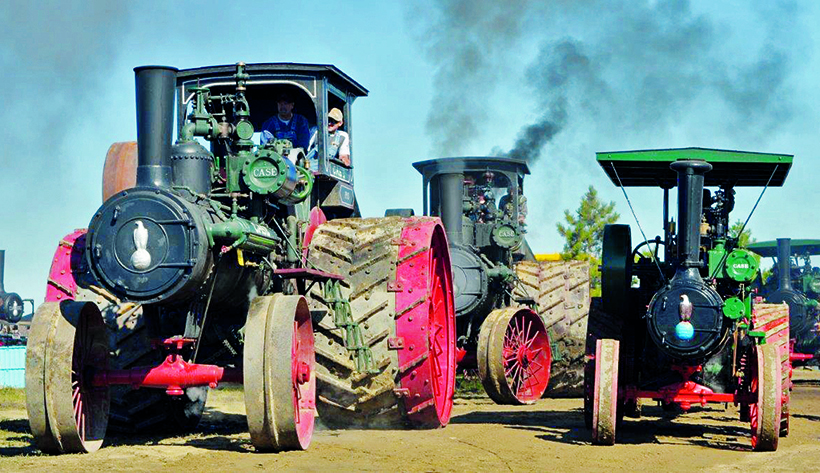
The land of the giants: The Case 110hp was very successful; over 900 were made and the model featured steam steering with Stephenson link motion or optional Baker.
Every Labour Day weekend (the first weekend in September) since 1954, generations of threshermen and women gather to relive the tradition of the good ole’ days, rekindling the land of the giants. They bring the past thundering back to life for the enjoyment of young and old alike. It all takes place in a small town called Rollag, some 35 miles from Fargo Moorhead, Minnesota, where the CNH big pivot steer artic tractors are made in the former Steiger factory and Bobcat is based here, too, of course.
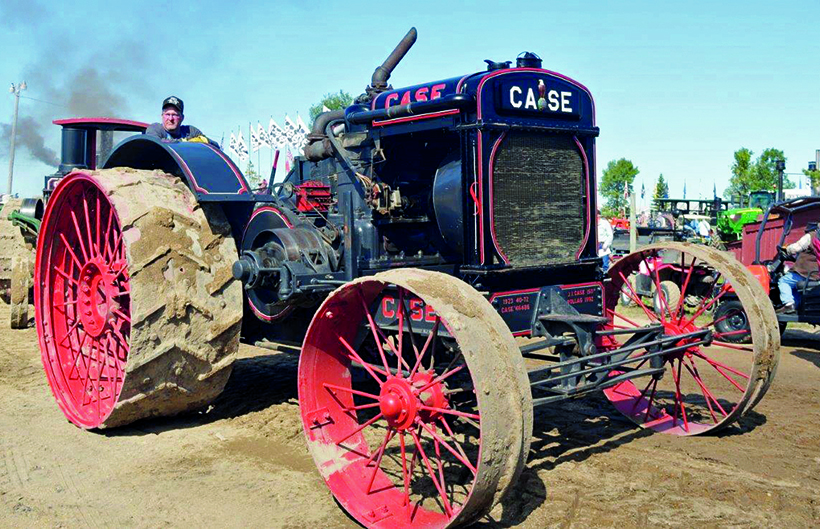
The Case 40-72 was introduced in 1921, then exited in 1923; it features a 7x8in bore and stroke engine. Very few were built and only five survive today.
The early settlers
Historically, this area was part of Sioux (Dakota) territory. The part that is present-day Fargo, was an early stopping point for steamboats traversing the Red River during the 1870s and 1880s. Many settlers here came from Scandinavia, and the city was originally named ‘Centralia’, but later renamed Fargo after Northern Pacific Railway director and Wells Fargo Express Company founder, William Fargo (1818-1881). The area started to flourish after the arrival of the railroad, and the city became known as the ‘Gateway to the West’.
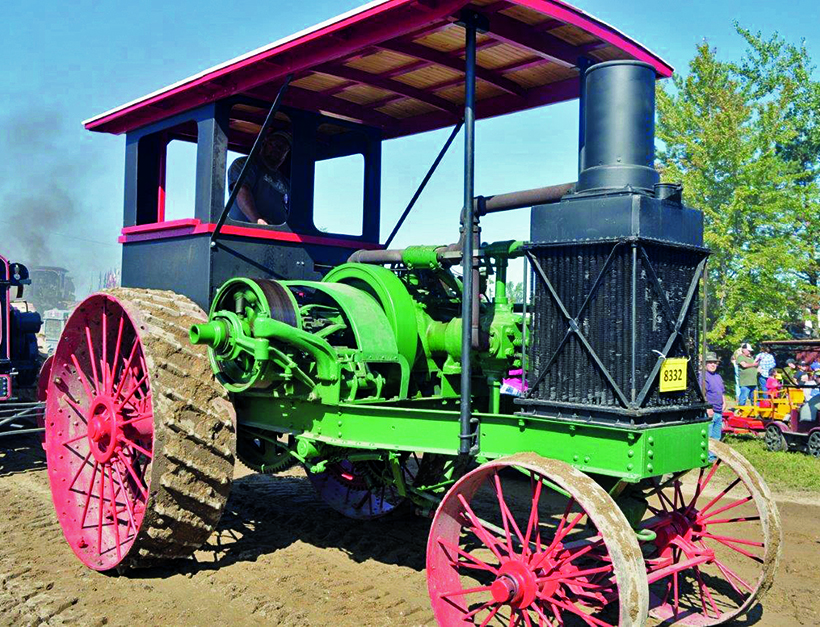
Parading here is the 1912 Case 20-40. It was made from 1912-1916, and was an award-winner at the acclaimed, Canadian Winnipeg Trials.
A major fire struck the city on June 7th, 1893, destroying 31 blocks of downtown Fargo, but the city was immediately rebuilt with new buildings made of brick, new streets and a water system. More than 246 new buildings were constructed within one year. The North Dakota Agricultural College was founded in 1890, as North Dakota’s land-grant university, becoming first accredited by the North Central Association in 1915 and, in 1960, the NDAC became known as North Dakota State University. Engineering and fabrication very much flourish in these parts, as well.
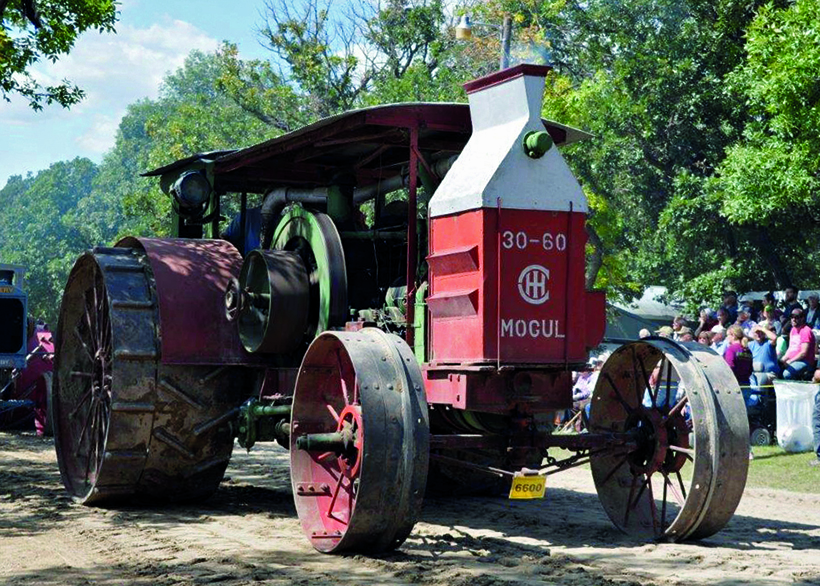
The mighty, 1913 IHC Mogul 30-60 features a two-cylinder, centre-crank engine, with a starting engine, of course. Those rear wheel extensions are something special!
Tractor fans
Minneapolis is full of tractor fans, and there are plenty of collections and rallies to visit in Minnesota. Mind you, living in these parts in winter isn’t a pleasant experience, as temperatures regularly drop below 21°F, it snows a lot and the area suffers at the hands of bitter winds. But, having said all that, at least things don’t rust away like they do in Florida or the UK.
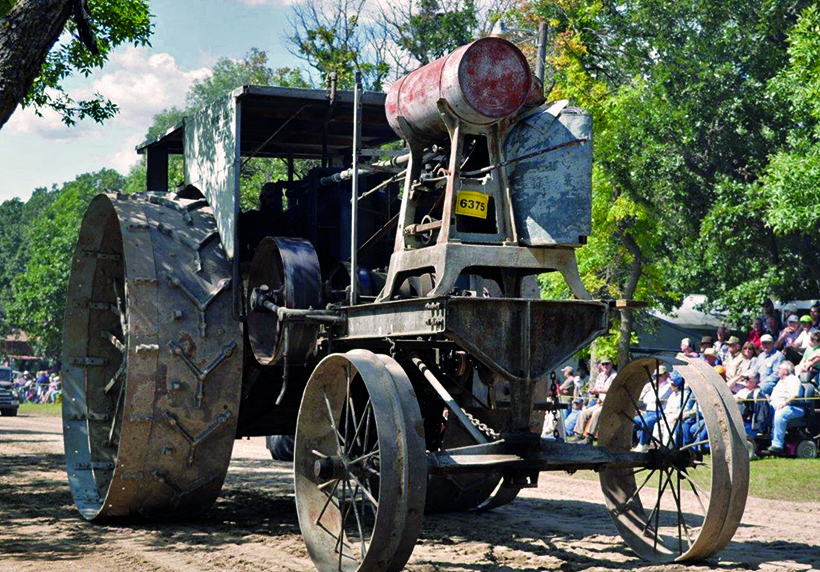
The amazing, 1912 Kinnard-Haynes Floor City 40-70 is a fantastic relic from possibly one of the better makes of tractors.
Threshing Bees, as the Americans called them, started here in 1940, thanks to an idea sparked from the soul of a local threshermen over supper. The Nelson boys fired-up the old Gaar-Scott engine to thresh with steam again for old-time’s sake, with family and friends. The event continued once a year until 1954, when the Western Minnesota Steam Thresher’s Reunion met formally for the first time, and invited the public to attend. It was an instant success.
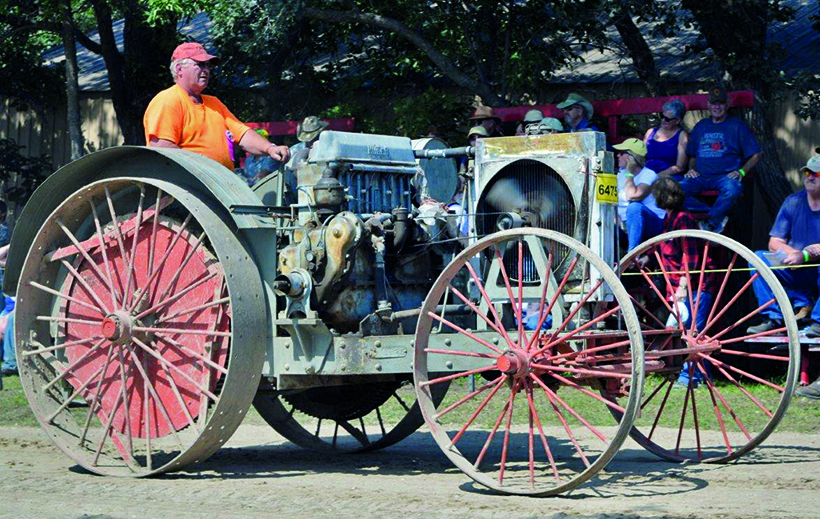
The 1924 Huber Super-Four 15-30 was introduced in 1921, and featured Midwest and, later, Waukesha engines.
Significant expansion
Today, the show has grown to include hundreds of demonstrations and exhibits spread over 210, beautiful acres of farmland. The show now attracts 80,000 visitors and volunteers every Labour Day weekend but, sadly, the 2020 event was cancelled due to Covid-19. It was to feature Otto Gas Engines, but that’s on hold for the 2021 show.
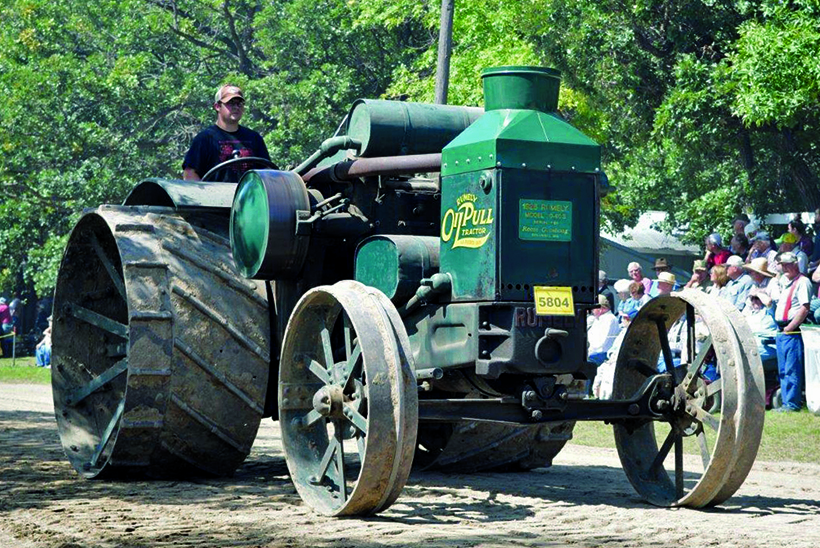
Seen in lightweight form with its pressed frame, is this 1926 Advance-Rumely S 30-60 with its 9x11in, two-cylinder engine. Some 500 of these tractors had been made when production stopped in 1928.
However, the showground is used year-round. Normally it has a steam school in June, which people attend from all over North America, and there’s an education weekend in July. If you imagine The Great Dorset Steam Fair as a permanent site, well Rollag is just that, but in the middle of nowhere, with no fairground or professional evening shows! Driving up from Fargo, you know if you’re nearly there by the smoke haze over ‘Steam Hill’.

This 108-year-old Pioneer 30, with its mighty, 8ft rear wheels, was made at Winona, Minnesota, and features an interesting, four-cylinder engine arrangement.
Everyone, young and old, has to take a driving test to prove their competency with their machine, before being able to drive it around the site. Older children, who’ve taken the test can take part with a tractor, and it’s nothing unusual to see the family in the cab of one. What a way to be part of tractor preservation from an early age, and children can understand what it’s all about by helping mum and dad with the tractor at the show. Health & Safety is certainly an important aspect of the event, but it’s done in the American way, of course.
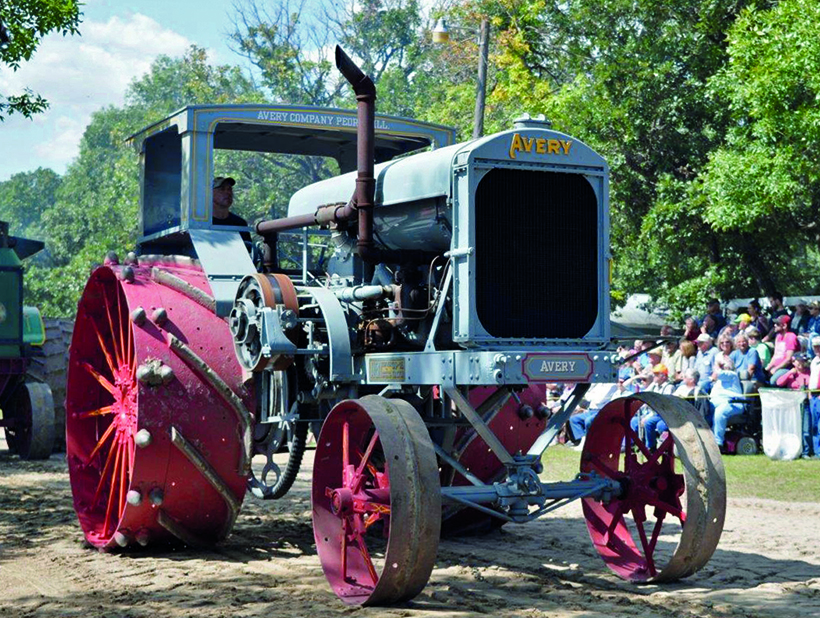
Beautifully restored to such a high standard back in 2015, this 1924 Avery 25-50 certainly looks the part with its flat radiator.
Wonderful volunteers
The Western Minnesota Threshers Reunion is a charity organisation that even Amazon donates to. However, there’s no selling of products – other than WMTR merchandise – permitted on the showgrounds from outside vendors which, for collectors like us, isn’t great news.
All of the organising team are volunteers, and receive no compensation for working at WMSTR; some arrive in April and stay to October. The site has a wonderful sawmill – the best I’ve ever seen – a lake and its own standard-gauge railway. There’s also the best steam shovel/plant display I’ve seen anywhere, and other wonderful things such as the massive, Snow 600hp compressor stationary engine, that took years to assemble.

A regular here is this 1919 Holt 75, with the early-style radiator; it’s such an impressive sight when the driver sets the engine to be started, with a bar on the flywheel.
The tractors and the steam engines are just big! There are some lovely early gems, from Case, International, Gaar-Scott, Advance-Rumely, Huber, Pioneer, Bull, Floor City, Avery, and many, many, more. In fact, these tractors all worked in this area, which isn’t that far from the Canadian border.
Super sawmills!
But pretty much everywhere you turn at this amazing event, you can see steam being used on the showgrounds. A perfect example is the massive, Montana boiler providing steam to the Pabst, Corliss and other stationary plant here. Besides big tractors, big steamers are all part of the show. However, the Briden-Roen, ‘Thick and Thin’, Earl’s Mill is a place in which I can happily spend hours.
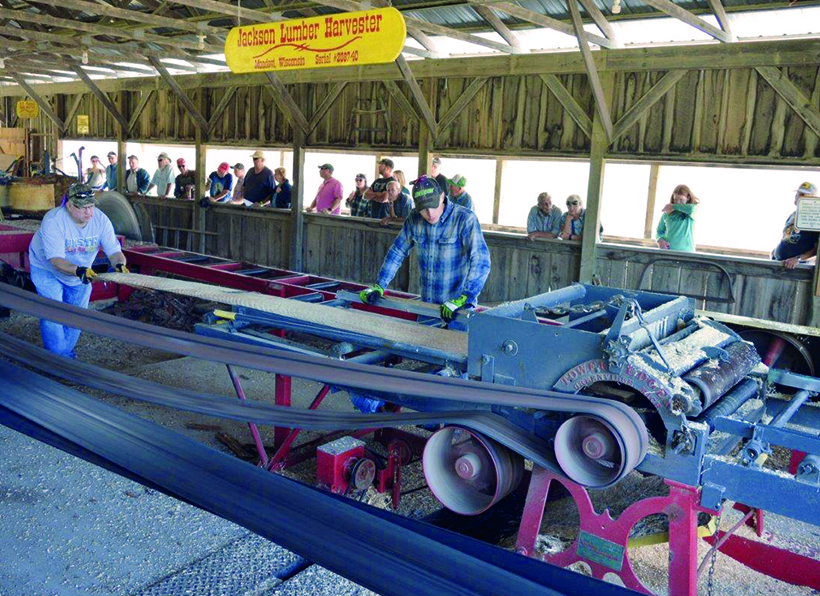
The sawmill is an amazing place, and is sometimes run by three engines.
Before the days of computers, lasers and high-tech equipment, sawmills were powered by steam and muscle. It helped that the offcuts could go into the fire to keep the steam pressure up, and that’s why steam power stayed in such places for longer, before i/c took over. Massive logs riding back and forth on the sleds, cables, pulleys and belts. A sharp eye got the job done, and it’s certainly done at some pace, too. We just don’t have anything like this in the UK today.
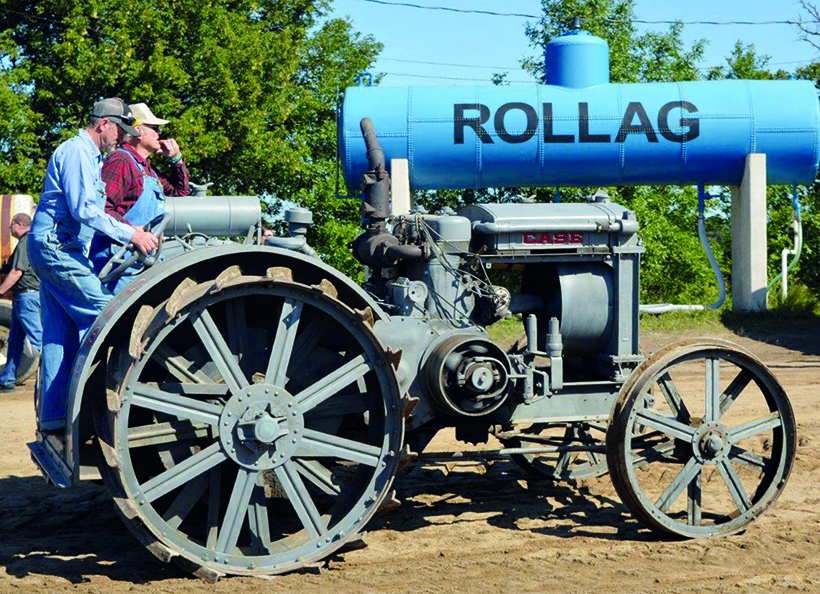
With a change of leader, Case went from green to grey in 1921 and, later, lost the pin-striping that can be seen on this finely-restored 18-32 model.
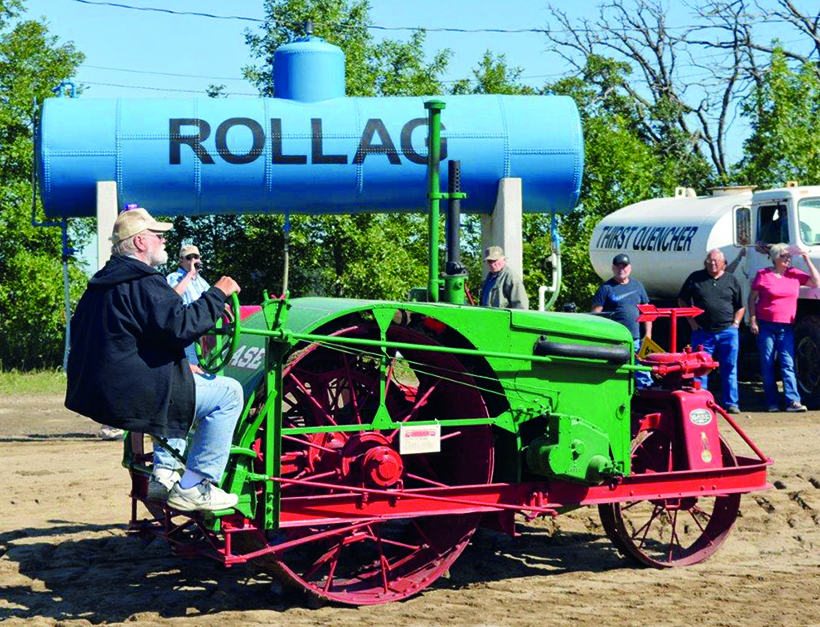
Not the most successful; the Davies-designed off-set Case 10-20 was made from 1915 to 1918. It was Case’s first, four-cylinder engine tractor, but there are quite a few preserved all over the world, including in the UK.
To buy a money-saving subscription to Tractor & Farming Heritage magazine, simply click here





